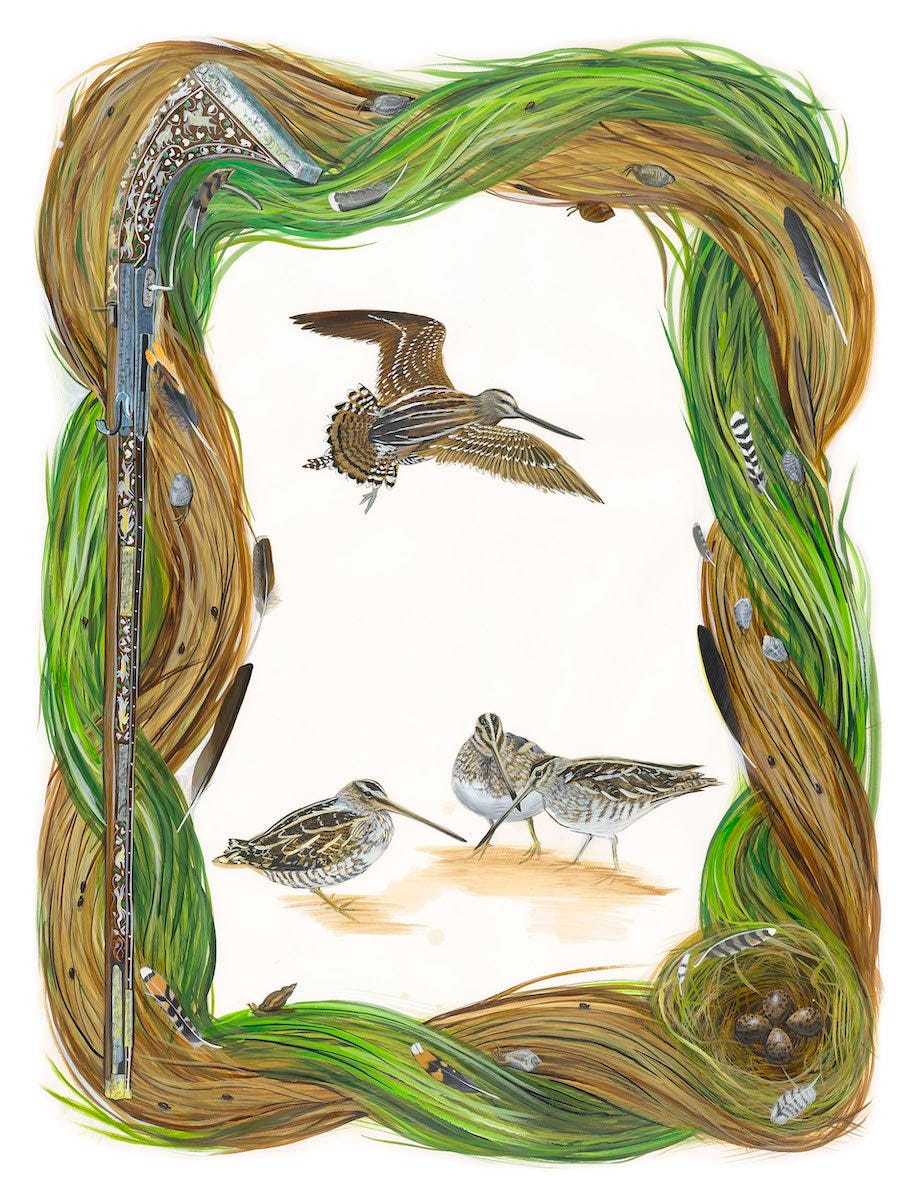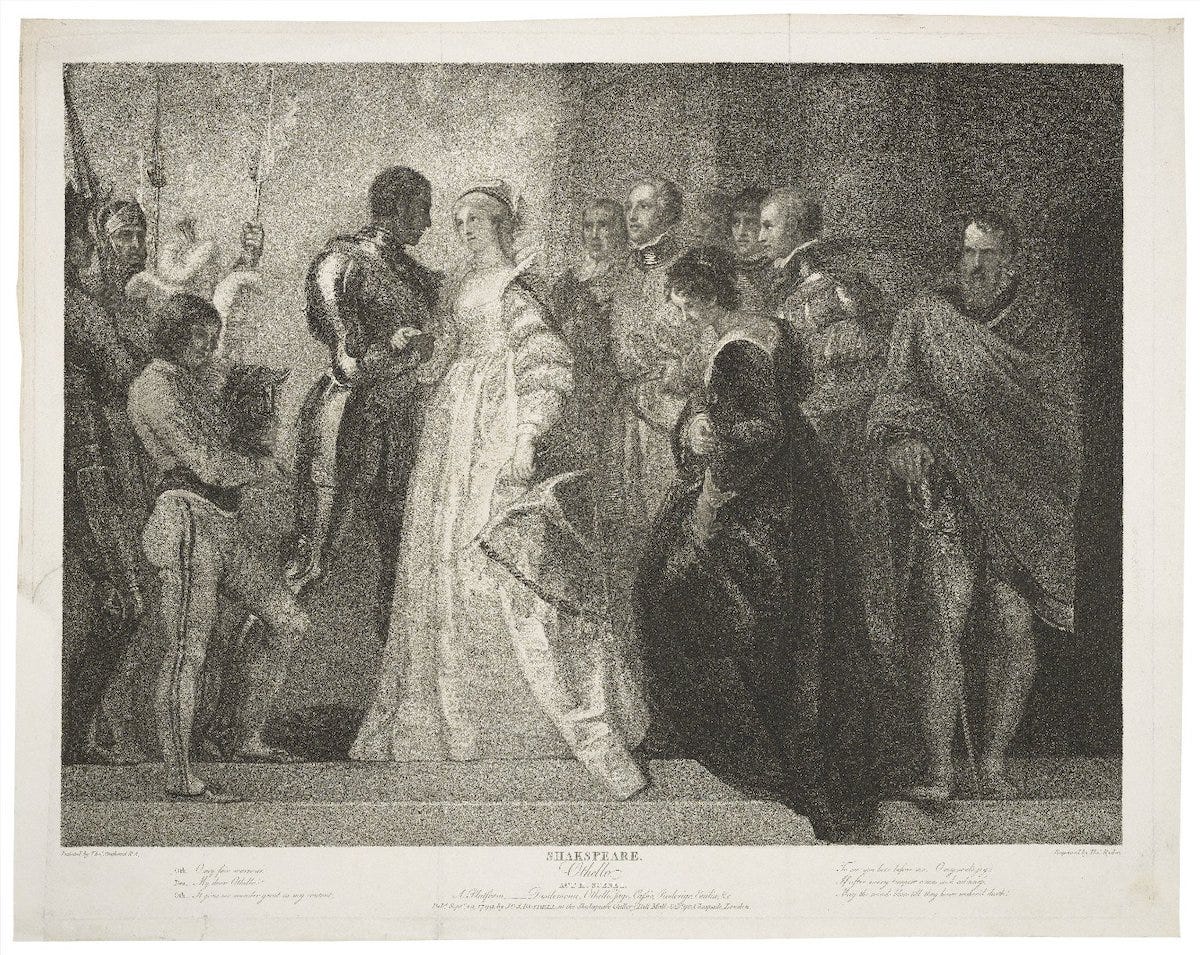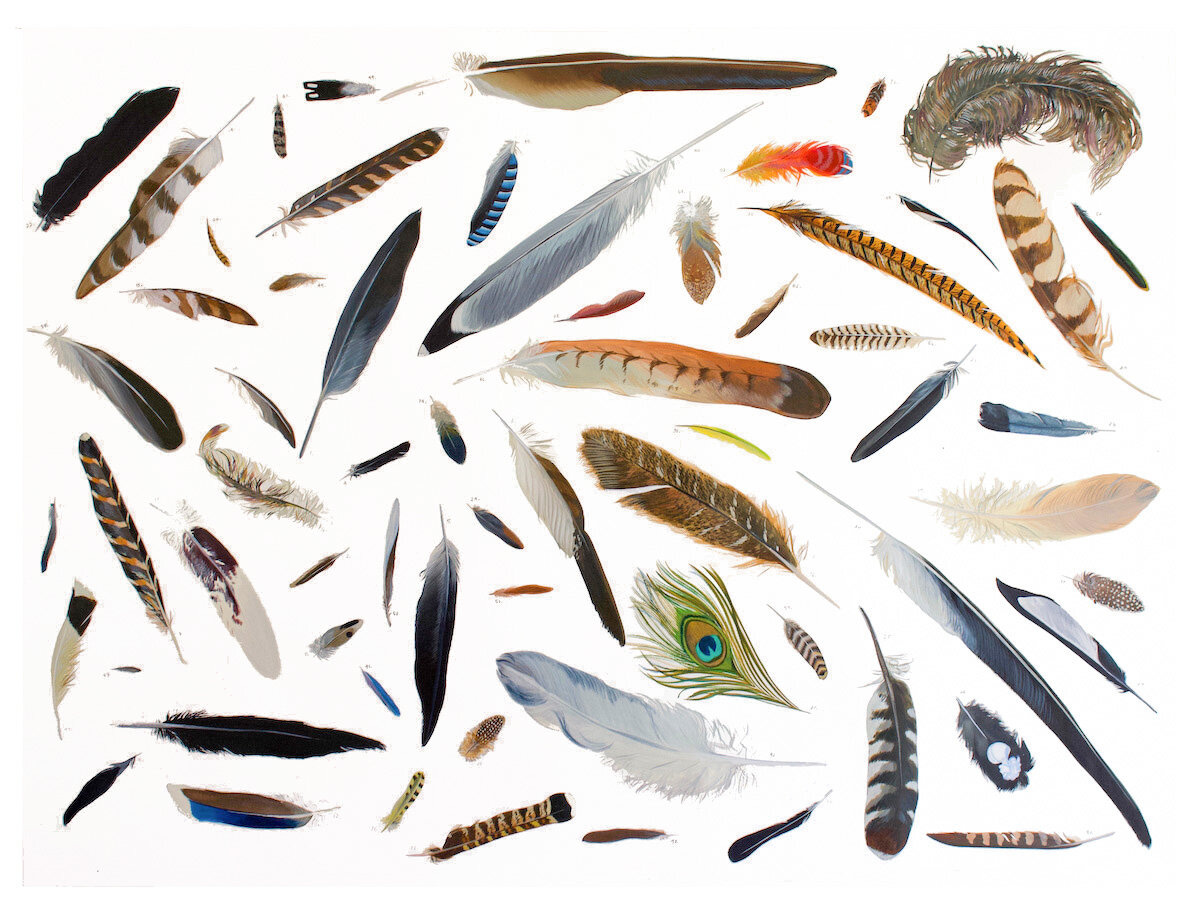#19 The Snipe
Painting by Missy Dunaway. Created with acrylic ink on paper. 30x22 inches (76x56 cm)
Facts About the Common Snipe
Snipes are small, plump waders with the longest beak-to-body ratio of all European birds.
They have sensitive, flexible beaks that probe marsh mud for insects and small mollusks to eat. The tip of their beaks can open and close independently, allowing them to eat with the beak submerged in mud.
The beak may be the origin of the snipe’s name. The Old English “snite” and Middle English “snype” are related to the word “snout.”
The snipe is difficult to catch because its plumage camouflages excellently into tall marsh grasses. When startled, it bursts out of vegetation, shooting off at 60 miles an hour in flight.
Its chaotic, zig-zag flight pattern makes hunting with a gun incredibly challenging. Since it is such a testing target, the word “snipe” is the basis for the term “sniper.”
This video captures lovely footage of the common snipe and jack snipe in the UK, with identification tips.
Shakespeare’s Snipe
We find the snipe in Othello, in a line from Iago about the gullible Roderigo.
Iago and Roderigo share a hatred for Othello and hatch a plan to destroy his marriage to Desdemona. Iago manipulates Roderigo’s love of Desdemona to get him to assist in his evil scheme. However, Iago makes it clear to the audience that he would never trifle with such a fool as Roderigo if he didn’t have something to gain from it.
Iago refers to Roderigo as a snipe to describe someone who is a waste of time:
Othello, Act I, Scene 3, Line 407
IAGO: Thou art sure of me. Go, make money. I have
told thee often, and I retell thee again and again, I
hate the Moor. My cause is hearted; thine hath no
less reason. Let us be conjunctive in our revenge
against him. If thou canst cuckold him, thou dost
thyself a pleasure, me a sport. There are many
events in the womb of time which will be delivered.
Traverse, go, provide thy money. We will have more
of this tomorrow. Adieu.RODERIGO: Where shall we meet i’ th’ morning?
IAGO: At my lodging.
RODERIGO: I’ll be with thee betimes.
IAGO: Go to, farewell. Put money enough in your
purse.⟩[RODERIGO: I’ll sell all my land.] He exits.
IAGO: Thus do I ever make my fool my purse.
For I mine own gained knowledge should profane
If I would time expend with such ⟨a⟩ snipe
But for my sport and profit.
Othello and Desdemona wed as Iago and Roderigo look on. Illustration by Thomas Ryder (1799). Folger Shakespeare Library
Behind the Painting
When I started the snipe painting, I promised myself this would be a simple composition. Things did not go according to plan. The complex mottling of the plumage was challenging enough, but the biggest demand was the twisted marsh grass. Hidden in the grass are snipe feathers, a nest, and the snipe’s favorite foods: nine marsh periwinkle snails and thirteen marsh beetles.
The ornate gun refers to Iago’s description of the snipe as a prey bird. The gun dates to 1550 - 1599. Like most objects in my paintings, I sourced it from the Victoria and Albert Museum in London using their digital archives. I encourage you to explore their collection.
Upcoming Events
I am thrilled to share my Birds of Shakespeare project at the Wendell Gilley Museum of Southwest Harbor, Maine. I will give a 45-minute talk about my project, including fun facts about Shakespeare’s birds. The presentation will conclude with a Q&A.
People-Nature-Art is a monthly series that brings artists, writers, carvers, and creative types of all kinds to the Gilley to explore how nature and art interact in their work and how their art impacts their approach to nature.
Opening Reception: Tuesday, 10 October 2023, from 5:30 - 7 pm
Presentation and Q&A: Tuesday, 10 October 2023, from 7 - 8 pm
Price: free admission
The Wendell Gilley Museum
4 Herrick Road
Southwest Harbor, ME 04679
T: (207) 244-7555
In addition to a reception and presentation, I will also teach a feather illustration workshop on Wednesday, 11 October 2023, from 10:30 am to 12:30 pm.
Class Description: According to the Migratory Bird Treaty Act of 1918, it is illegal to collect feathers from birds that are migratory and native to the United States territories. Let’s collect feathers lawfully—as paintings! In this lesson, Dunaway will guide you through an approachable step-by-step process to create a realistic painting of feathers using acrylic-ink on paper.
Appropriate for all skill levels, including children, beginners, and experienced artists. Materials provided. Registration required.
Illustrating Feathers with Missy Dunaway
11 October 2023
10:30 am - 12:30 pm
Museum Members: $25.00
Non-Members: $30.00
Exit, pursued by a bird
Thank you for subscribing! You can find the full bird profile, including citations and endnotes, at birdsofshakespeare.com/birds.
If you’d like to connect with me, reply to this newsletter or email birdsofshakespeare@gmail.com.
Copyright (C) 2023 The Birds of Shakespeare. All rights reserved.










